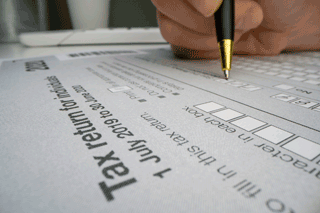Quote Of The Week
“Our inflation problem is not because the lowest paid workers are getting paid too much, it’s because of a war in Ukraine and busted supply chains and a decade of neglect.”
Treasurer Jim Chalmers
Rents Continue to Soar
 Apartments and house rents across the country have been rising, with wages lagging behind.
Apartments and house rents across the country have been rising, with wages lagging behind.
The median weekly asking rents for capital city units increased 22.2 per cent in the year to March, six times faster than wages.
Despite the increasing financial burden, many are taking a positive approach – moving in with family or flatmates to reduce their costs, or opting to become homeowners.
It is also a chance for people to consider opportunities to look for cheaper properties that can better fit their budgets.
People are changing the type of property they want to rent and changing it to a less expensive property like a townhouse or an apartment.
Westpac senior economist Matthew Hassan said Australian tenants were facing strong competition for homes. Returning migration was adding to already strong demand, amid a time of lower supply.
Rate Hikes Keep Coming
 The Reserve Bank of Australia has once again raised the cash rate, its 12th increase since May last year.
The Reserve Bank of Australia has once again raised the cash rate, its 12th increase since May last year.
While many speculated a halt in rate rises, it increased by 25 basis points to 4.1% when it met on June 6.
According to RateCity.com.au the most recent rate rise will cost the average Australian homeowner an additional $70 a month.
RBA Governor Philip Lowe says the move is necessary to try and control inflation.
“Inflation in Australia has passed its peak, but it is still too high, and it will be some time yet before it is back in the target range,” he says.
“This further increase in interest rates is to provide greater confidence that inflation will return to target within a reasonable timeframe.”
While Lowe says there are signs the economy is slowing, inflation is still far outside of its target band of between 2% and 3%.
But he says rising rates and higher costs of living mean household spending will slow which will help ease inflation.
House Prices Surge Again
 Low levels of stock throughout most markets means property prices are once again starting to rise.
Low levels of stock throughout most markets means property prices are once again starting to rise.
CoreLogic’s national Home Value Index shows the pace of house price growth accelerated to 1.2% in May, its third consecutive monthly rise since March.
While PropTrack’s Home Price Index puts the increase at 2% across the combined capital cities for the year to date and says in May values went up by 0.33%.
PropTrack senior economist Eleanor Creagh says the rise in prices seen so far this year gathered pace in May, broadening and accelerating across markets.
Creagh says sellers are benefitting from the reduced levels of competition with other vendors.
While Lawless says advertised listings trended lower through May with roughly 1800 fewer capital city homes advertised for sale relative to the end of April.
“Inventory levels are 15.3% lower than they were at the same time last year and 24.4% below the previous five-year average for this time of year,” he says.
Long-Term Gains Remain Impressive
 Regional Australia’s property market continues to experience large declines in dwelling approvals. Despite this, long-term gains in property prices remain impressive.
Regional Australia’s property market continues to experience large declines in dwelling approvals. Despite this, long-term gains in property prices remain impressive.
Median house prices in some areas have seen growth of up to $1.1 million in the past 5 years, with Bright (VIC), Jindabyne (NSW) and Venus Bay (VIC) all hitting impressive increases of 152%, 148% and 133%.
The mantra that property should be seen as a long-term investment is also underscored by the growth experienced in the best performing regional property markets over the past ten years.
Over the past 10 years, investors and homeowners have seen gains as large as 362%, with Byron Bay (NSW) topping the list with a whopping $2.35 million increase.
These figures suggest that property remains a valuable long-term investment for many Australians. Tremendous capital growth since 2013 has seen multi-million dollar profits in some regions.
Tax Break End Won’t Fix Crisis
 While many blame investors and negative gearing for causing the housing crisis, research by the Grattan Institute says its effect is minimal.
While many blame investors and negative gearing for causing the housing crisis, research by the Grattan Institute says its effect is minimal.
Grattan Institute economist, Gene Tunny, estimates the price effect of negative gearing to be between 1% and 4%.
He says getting rid of it may change the distribution of ownership from investors to renters, but it is unlikely to improve the overall housing supply.
The number of Australian homeowners has fallen by about 10% since the mid sixties.
NSW Productivity Commissioner Peter Achterstraat says planning and zoning systems are partly to blame for the crisis.
He says they make it difficult to build enough homes where people want to live, which are close to jobs, transport and schools.
“Instead, the system encourages urban sprawl, forcing people into longer and longer commutes,” he says.
He says what will lead to reduced housing costs is increasing supply with a 10% increase in dwellings leading to a 25% reduction in housing costs.




